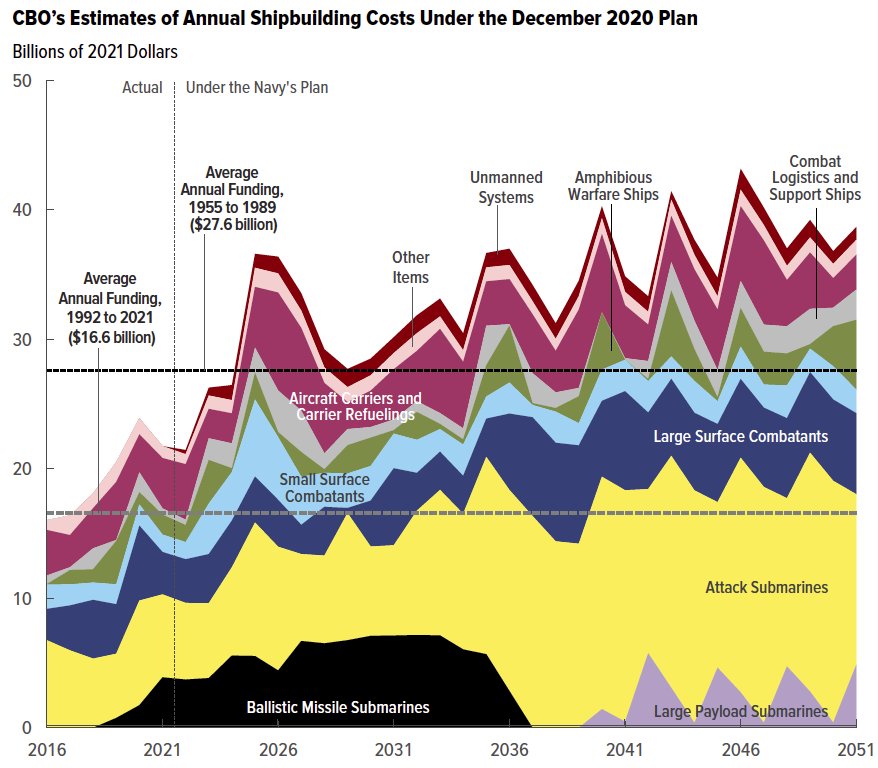The following is the April 22, 2021 Congressional Budget Service report, An Analysis of the Navy’s December 2020 Shipbuilding Plan.
From the report
Each year, as directed by the Congress, the Navy submits a report with the President’s budget describing the planned inventory, purchases, deliveries, and retirements of the ships in its fleet for the next 30 years. The Navy did not submit its 30-year shipbuilding plan with the fiscal year 2021 budget, but the Department of Defense submitted a plan to the Congress on December 9, 2020, that covers the period 2022 to 2051. In this report, the Congressional Budget Office analyzes that shipbuilding plan and estimates the costs of implementing it.
- Cost. The December 2020 plan would require average annual shipbuilding appropriations almost 50 percent larger than the average over the past five years. CBO estimates that total shipbuilding costs, including costs for nuclear refueling and unmanned systems, would average about $34 billion per year (in 2021 dollars), 10 percent more than the Navy estimates. Annual operation and support costs for the fleet would grow from $74 billion today to $113 billion by 2051. The Navy’s total budget would increase from about $200 billion today to $279 billion (in 2021 dollars) by 2051.
- Purchasing Plan. The Navy plans to purchase 404 new ships between 2022 and 2051—300 combat ships and 104 logistics and support ships. The Navy also plans to purchase 223 unmanned undersea and surface vehicles to supplement its fleet.
- Fleet Size. If the Navy adhered to the schedule for purchases and ship retirements outlined in its December 2020 plan, the inventory of manned ships would rise from about 300 today to about 400 by 2038. The force of unmanned systems would rise from just a few prototypes today to about 140 by 2045.

Download the document here.





